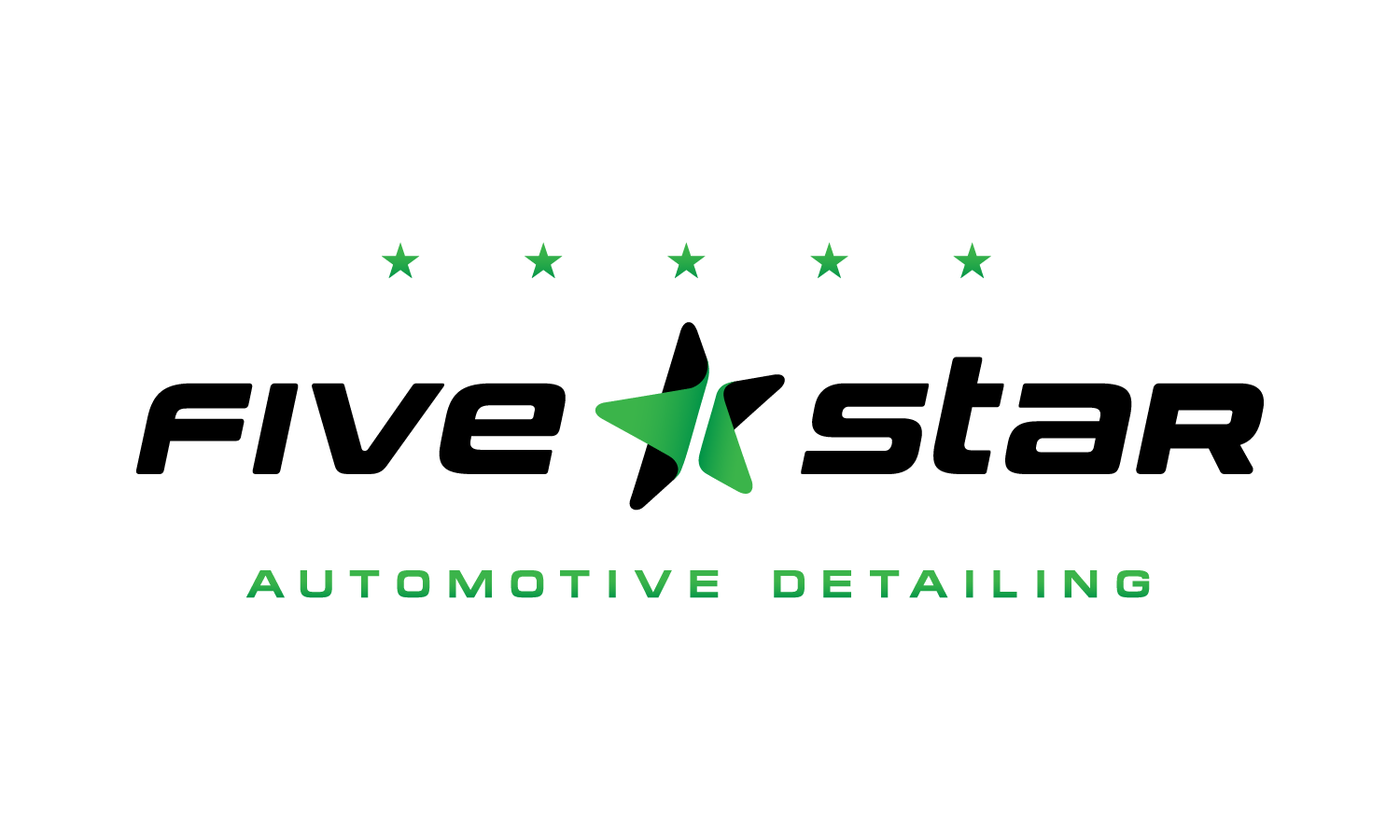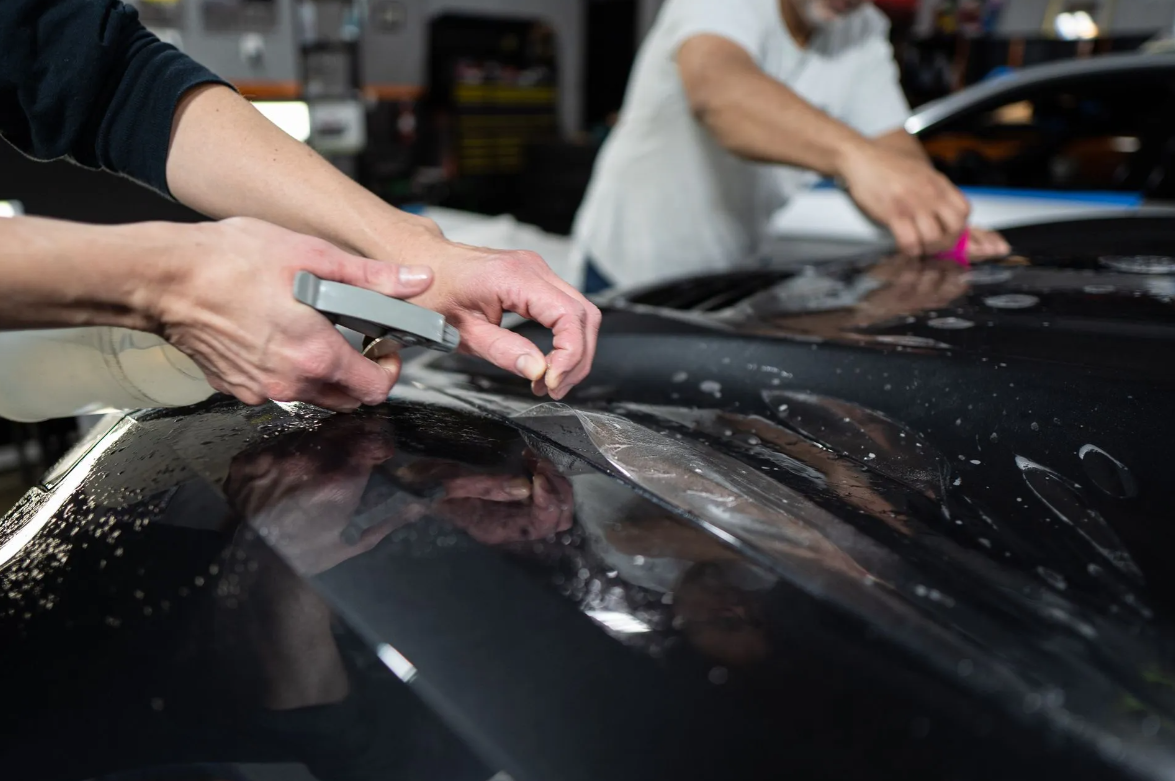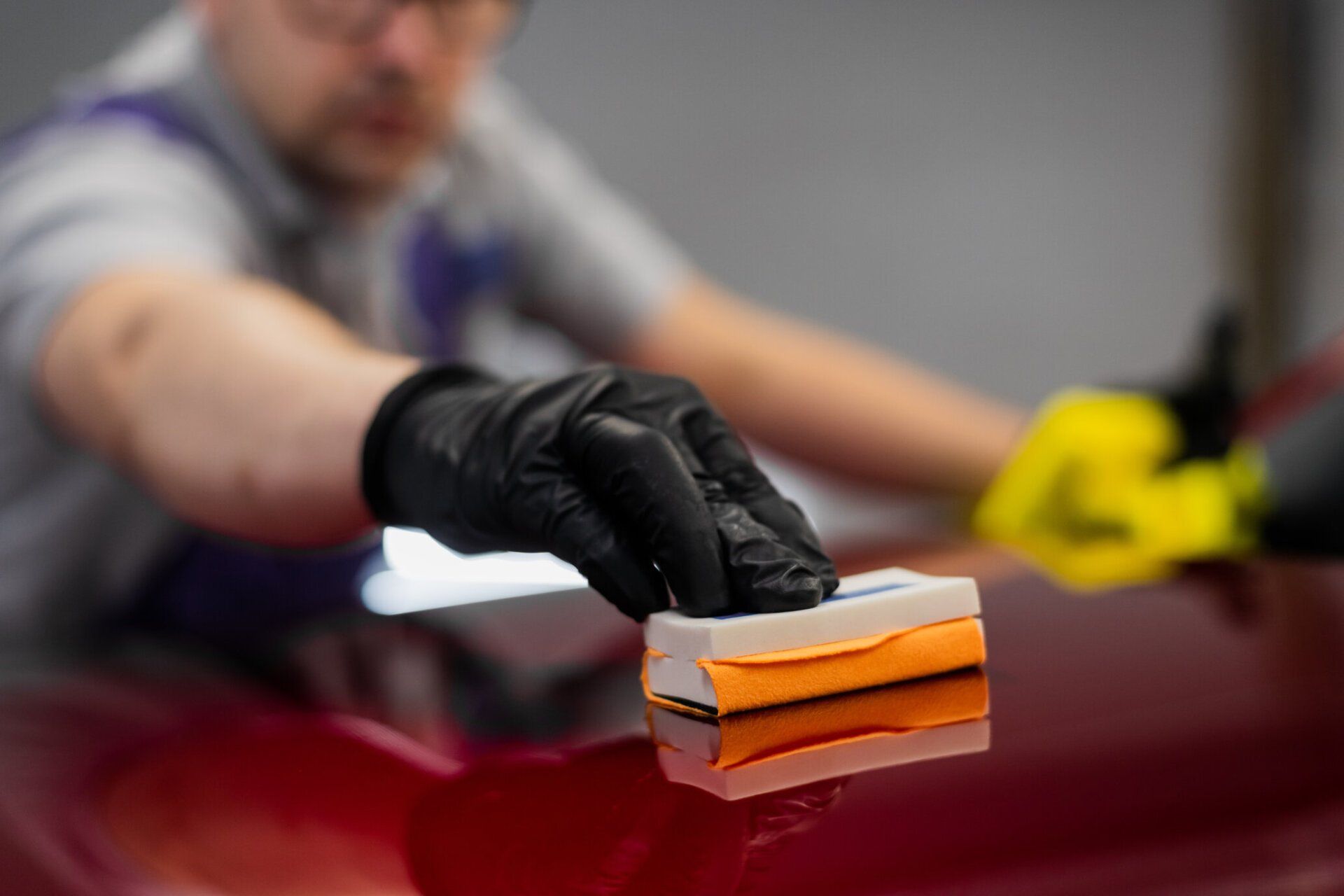Understanding the paint correction process helps car owners plan appropriately and feel confident about their investment. Professional paint correction requires multiple steps, specialized equipment, and adequate time to achieve optimal results. Rather than rushing through the work, quality shops follow systematic timelines that ensure each phase receives proper attention.
The paint correction timeline varies based on vehicle size, paint condition, and desired outcome level. A basic correction on a sedan might require one full day, while a comprehensive multi-stage correction on larger vehicles can extend to three or four days. Understanding these variables helps set realistic detailing service expectations and prevents scheduling conflicts.
Professional shops communicate timeline expectations upfront because paint correction cannot be rushed without compromising quality. Each step builds upon the previous work, and adequate curing time between stages ensures optimal bonding and durability. This systematic approach protects the investment while delivering results that justify the time commitment.
Initial Assessment and Consultation Phase
The paint correction process begins with a thorough vehicle assessment that typically takes 30-60 minutes during the initial consultation. Professional detailers examine paint condition under controlled lighting to identify defects, measure paint thickness, and determine appropriate correction methods.
During this phase, technicians document existing damage through photographs and written notes. This documentation serves multiple purposes, including insurance protection, progress tracking, and establishing realistic outcome expectations. The assessment also reveals any areas requiring special attention or alternative approaches.
Paint thickness measurements across multiple panels provide crucial data for planning correction methods. Vehicles with thin paint require gentler approaches, while thicker paint systems can handle more aggressive correction techniques. This information directly influences timeline requirements and final pricing structures.
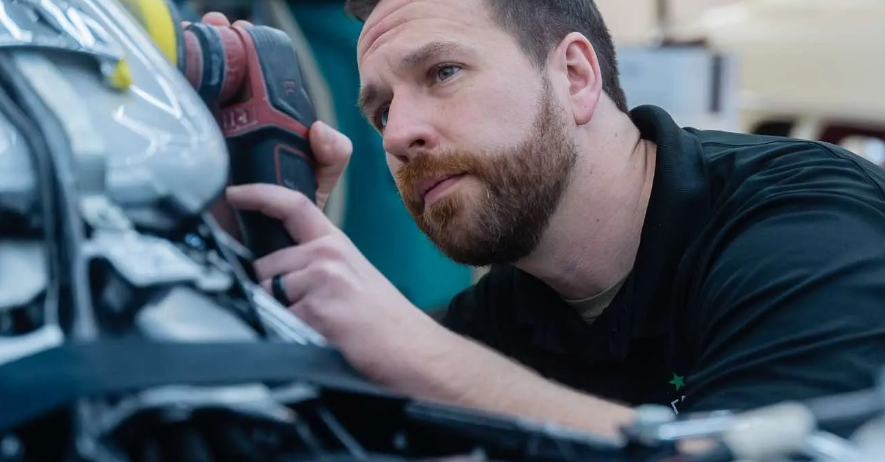
Pre-Correction Preparation Steps
Vehicle preparation represents a critical phase in the paint correction timeline that typically requires 2-4 hours depending on contamination levels. This phase ensures optimal correction results by creating clean, uncontaminated surfaces for subsequent work.
The preparation process includes
- Complete vehicle washing with pH-neutral products
- Iron contamination removal using specialized chemical treatments
- Clay bar decontamination to eliminate bonded particles
- Masking of trim pieces and sensitive areas
- Final inspection wash to verify surface cleanliness
Contamination removal cannot be skipped or shortened because particles left on the surface will interfere with correction equipment and create additional scratches. Professional shops allocate adequate time for this phase because proper preparation directly impacts final results quality.
Stage One: Heavy Cutting and Defect Removal
The first correction stage focuses on removing major defects, including deep scratches, oxidation, and severe swirl marks. This phase typically requires 6-12 hours depending on paint condition and vehicle size, making it the most time-intensive portion of the paint correction process.
Heavy cutting utilizes aggressive compounds and cutting pads to remove damaged paint layers and reveal fresh material underneath. Technicians work systematically across each panel, overlapping passes to ensure complete defect removal. Progress is monitored continuously through cleanup passes that reveal actual correction results.
Multiple passes may be necessary on severely damaged areas, extending timeline requirements but ensuring complete defect elimination. Professional shops never rush this stage because incomplete heavy cutting creates problems that cannot be resolved in subsequent steps.
Stage Two: Polishing and Refinement
Polishing removes marks left by heavy cutting compounds while enhancing paint clarity and depth. This refinement stage typically requires 4-8 hours and determines the final appearance quality of the correction work.
Progressive polishing uses finer compounds and softer pads to eliminate cutting marks while building paint gloss. Multiple polishing steps may be necessary to achieve show-quality results, particularly on dark colors that reveal imperfections more readily.
The polishing phase requires different products and techniques for various paint types. Single-stage paints need specific approaches compared to modern clear-coat systems, influencing both timeline requirements and equipment selection.
Final Protection Application
Protection application concludes the paint correction timeline and typically requires 2-4 hours depending on the chosen protection method. Options include traditional waxes, paint sealants, or ceramic coatings, each with different application requirements and curing needs.
Ceramic coating applications require additional preparation steps and extended curing time that can add 6-12 hours to the overall timeline. However, these protection systems provide superior durability that justifies the additional time investment for many customers.
Surface preparation for protection involves removing all polishing residues and ensuring optimal bonding conditions. This preparation directly impacts protection longevity and performance, making adequate time allocation essential for optimal results.
Factors That Affect Timeline Duration
Several variables influence the paint correction process timeline beyond basic vehicle size and paint condition. Understanding these factors helps customers plan appropriately and avoid scheduling conflicts.
Paint system type significantly impacts correction timeline. Single-stage paints, clear-coat systems, and specialty finishes each require different approaches and time allocations. Older vehicles with multiple paint layers may need additional assessment time to determine safe correction limits.
Environmental conditions affect curing times and working conditions. Temperature and humidity influence product performance and timeline requirements. Professional shops often adjust schedules based on weather conditions to ensure optimal results.
Customer outcome expectations also influence timeline requirements. Show-quality correction requires more time and attention than basic improvement correction. Clear communication about desired results helps establish appropriate timeline expectations from the beginning.
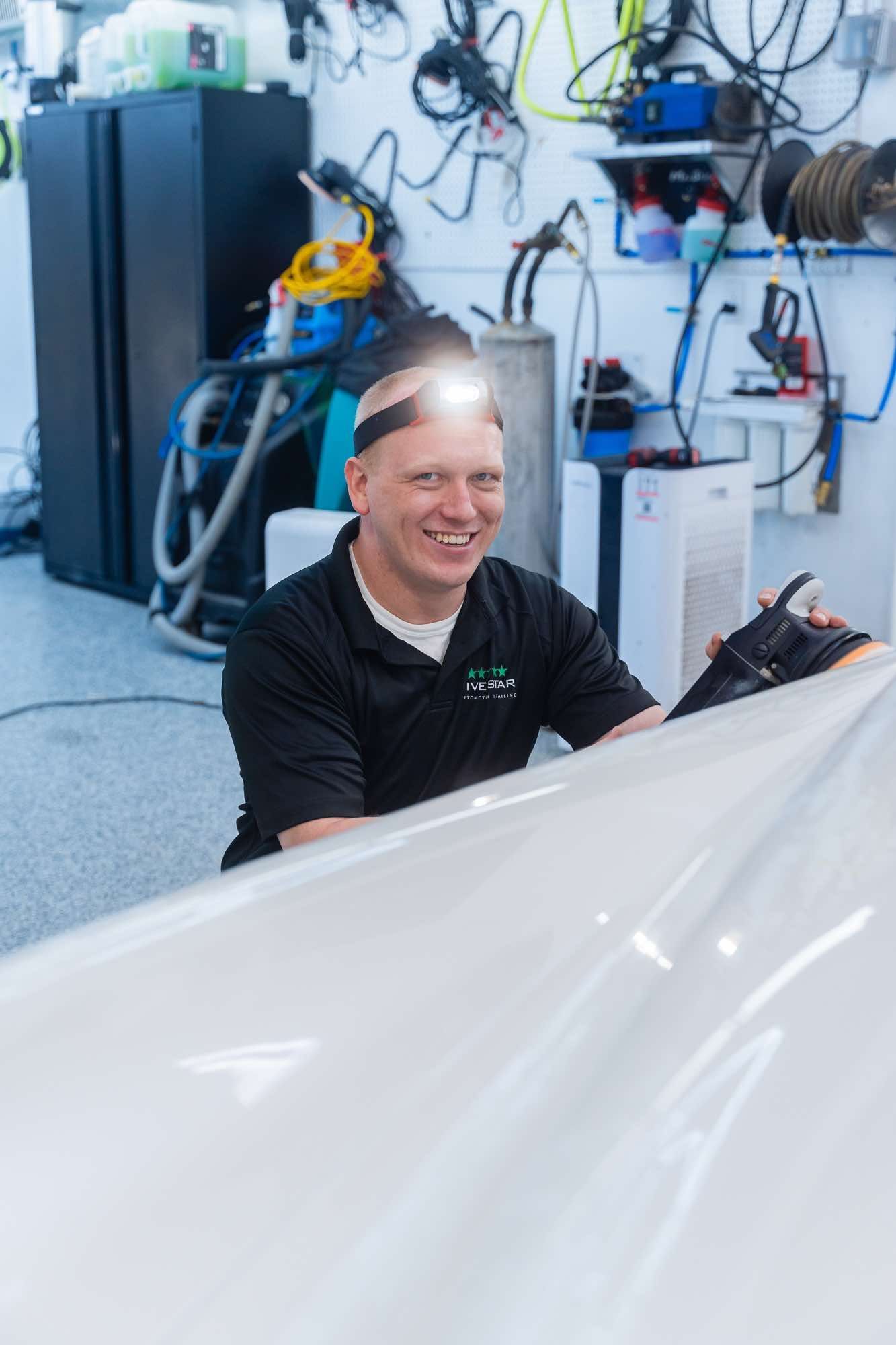
Multi-Day Service Management
Extended detailing service expectations for multi-day correction require careful coordination between the shop and customer. Professional facilities provide secure storage during overnight periods and maintain communication about progress and any timeline adjustments.
Daily progress updates help customers understand correction advancement and any discoveries that might affect timeline or pricing. Transparent communication builds confidence and prevents misunderstandings about extended timelines.
Some shops offer loaner vehicles or transportation assistance for multi-day services, though availability varies by location and demand. Discussing these options during the initial consultation helps customers plan accordingly.
Get Professional Paint Correction for Lasting Shine
Understanding the paint correction timeline enables informed decision-making and realistic scheduling for professional correction services. Each phase serves specific purposes that contribute to optimal final results, and rushing any step compromises overall quality and durability.
Professional paint correction process management balances efficiency with quality to deliver results that justify time and investment commitments. Clear timeline communication and progress updates ensure customers feel confident throughout the correction process.
Setting proper detailing service expectations through transparent timeline communication builds trust and satisfaction. When customers understand the time requirements and reasoning behind each phase, they appreciate the professional approach and attention to detail that quality correction demands.
Frequently Asked Questions
How long does paint correction typically take?
Paint correction timelines vary significantly based on vehicle size, paint condition, and desired outcome level. Basic single-stage correction on smaller vehicles typically requires 8-12 hours, while comprehensive multi-stage correction can extend to 20-30 hours spread over multiple days. Severely damaged paint or show-quality correction may require additional time for optimal results.
Can paint correction be completed in one day?
A single-stage paint correction process can often be completed in one day for vehicles in good condition requiring basic improvement. However, comprehensive correction with multiple stages typically requires 2-3 days to allow proper curing time between steps and prevent rushing that compromises quality. Multi-day scheduling ensures each phase receives adequate attention.
What happens if my vehicle needs more time than estimated?
Professional shops provide timeline estimates based on initial assessment, but additional damage discovery during correction may extend requirements. Reputable facilities communicate any timeline changes immediately and explain the reasons for adjustments. Most shops honor original pricing for additional time needed due to assessment inaccuracies rather than customer-requested changes.
Do I need to leave my vehicle overnight during multi-day correction?
Multi-day detailing service expectations typically include secure overnight storage at the professional facility. Vehicles remain in climate-controlled environments with appropriate security measures during extended correction timelines. Some shops offer progress viewing appointments or detailed photo updates for customers who want to monitor correction advancement.
How should I prepare my vehicle before the correction service?
Vehicle preparation requirements are minimal since the professional paint correction process includes comprehensive cleaning and decontamination phases. However, removing personal items, ensuring fuel levels for potential vehicle movement, and providing any relevant paint history information helps streamline the initial assessment and preparation phases of the correction timeline.
